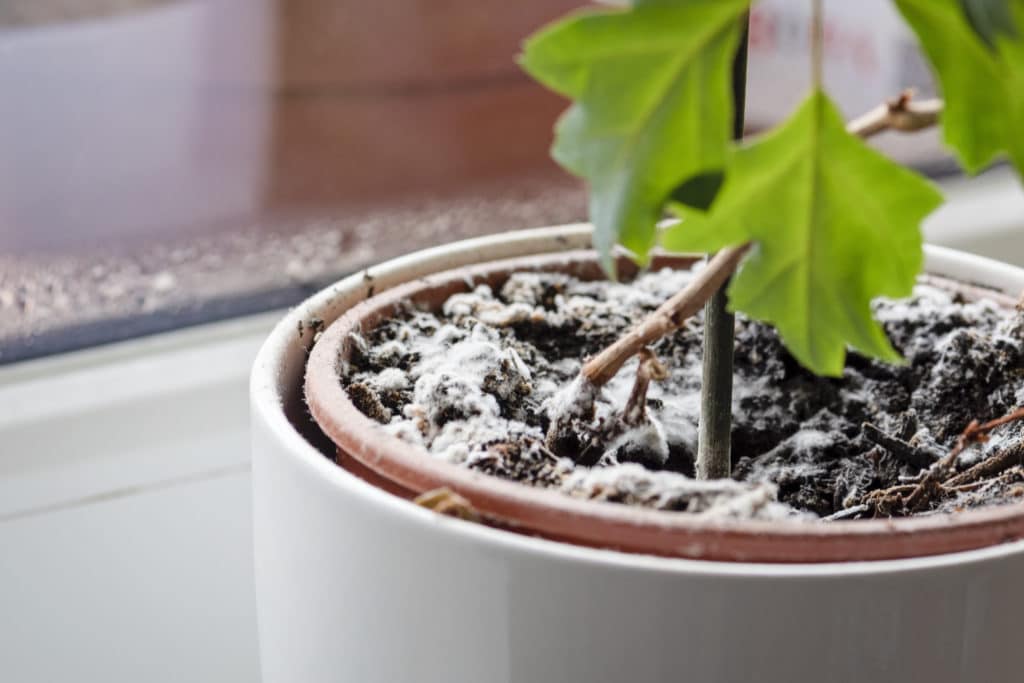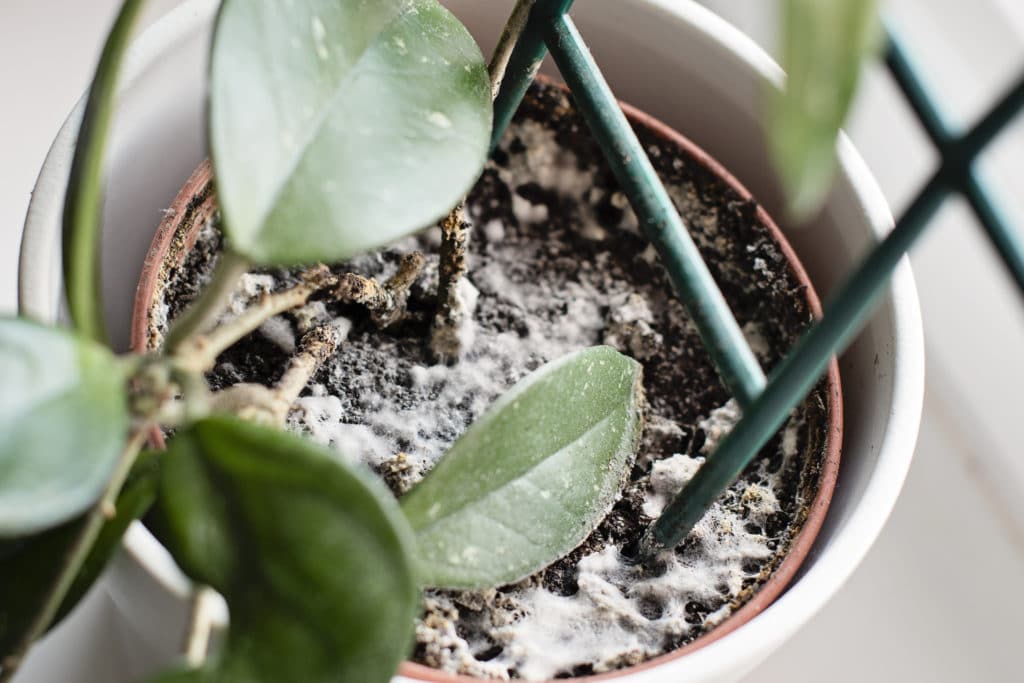
Mold can be a problem for houseplants and gardeners alike. It is important to understand mold growth and how it affects houseplant soil in order to prevent mold from spreading.
In this article, we will share some tips on how to get rid of mold on plant soil that you might find either inside or outside your home.
White mold may develop in your garden for a variety of reasons. Understanding the source of mold spores and how to remove it will keep your yard and home healthy.
Shelby DeVore, gardening expert and author of “The Organic Gardener’s Handbook of Natural Insect and Disease Control,” offers the following advice:
“Most people don’t realize that plants have natural microorganisms that exist around them just like we have within our bodies and on our skin. These organisms are important for plant health because they help to break down organic matter in the soil, making nutrients available to the plants. However, under certain conditions, these organisms can also cause problems such as mold growth. Mold occurs on soil for a number of reasons including excess moisture, lack of air circulation, high humidity levels, and poor soil drainage. It is important to identify and correct any factors that might be contributing to mold growth in order to get rid of the mold and prevent it from returning.”
You can also use organic fertilizer or chemical fungicides to kill the mold. DeVore recommends using a product called “Safer’s Garden Fungicide” which is available at most garden stores.
This product contains sulfur dioxide, copper sulfate, and horticultural oil and is effective against a wide variety of fungal diseases. Be sure to follow all instructions on the label when using any type of fungicide.
If you have a lot of gray mold growing on your plants, you may need to take more drastic measures.
Remove the plant from the soil and discard it in the trash. Wash all of the moldy soil off of the roots with hot water and a mild detergent, then allow them to dry completely before replanting.
Make sure you correct any conditions that might be contributing to mold growth so that it doesn’t come back again.
Mold on houseplant soil can cause problems for your plants and garden. It is important to identify and correct any factors that might be contributing to mold growth in order to get rid of the mold spores and prevent them from returning.
There are several things you can do including improving air circulation, increasing sunlight exposure, watering correctly, and using organic fertilizer or chemical fungicides.
Improve Air Circulation
One of the most important things you can do to prevent mold from growing on houseplant soil is to improve air circulation.
This will help to keep the soil dry and reduce humidity levels. You can improve air circulation by spacing your plants correctly, using fans, and opening windows and doors in warm weather.
Increase Sunlight Exposure
Mold thrives in dark environments with high humidity levels. Sunlight exposure will help to kill mold and reduce humidity levels. Make sure your plants get at least six hours of direct sunlight each day.
Water Correctly
It is also important to water your plants correctly in order to avoid mold growth. Overwatering can lead to excess moisture and poor soil drainage which encourages mold growth.
Be sure to water deeply but only when the soil is dry to the touch. It may take several days for mold problems to show up, so be patient and keep an eye on your plants until you see improvement.
Make Use of Natural Fungicides
If mold does develop in your garden there are a number of natural solutions that can help control it including spraying with lemon juice or tea tree oil which contain antibacterial properties; adding cinnamon sticks, cloves, or mint leaves to containers as these will help keep mold away naturally; and using neem oil extract from seeds of the azadirachta indica plant because this contains powerful antifungal agents such as limonene (which also helps repel mosquitoes), nimbin A, salannin B-nimbin, and azadirachtin.

Remove the Plant from the Soil
If you have a lot of mold growing on your plants, you may need to take more drastic measures. Remove the plant from the soil and discard it in the trash. Wash all of the soil off of the roots with hot water and a mild detergent, then allow them to dry completely before replanting. Make sure you correct any conditions that might be contributing to mold growth so that it doesn’t come back again.
Contaminated Soil
Mold can also be caused by the potting soil itself. While microorganisms are expected in soil, it may become contaminated before it reaches a container.
Plant expert Desiree Thompson of Gardening Services London says, “Throw away any compost that has been improperly stored and keep your unused soil in a dry location with properly sealed holes.” Even well-stored soil can soak up moisture when punctured, so always check your bag before potting a plant.
Decomposing Leaves on Surface
Mosquitoes, black mold, and other fungus infections thrive on decaying plant matter. Mold will develop in the soil if there are too many dead leaves. Before they pile at the base of the plant, remove any fallen branches. Fallen leaves may be used as mulch to decrease yard waste outside.
How to Prevent New Mold from Growing
Instead of watering on a strict schedule, insert your finger into the soil to determine its moisture level. For forgetful plant owners, hydrospikes might be an option.
These spikes work with a timer to water plants for short periods of time as needed.
If you are using tap water, let it run until it is cold before watering your plants. The chlorine in the water can be harmful to plants and mold. If you have hard water, use a water filter or allow the water to sit out overnight so that the minerals will precipitate and settle at the bottom of the container.
Aerate Your Soil
Aerating soil allows air circulation which helps reduce mold growth. You can do this by hand with a trowel or pitchfork, or you can use an electric tool like an aerator or spike Aerate Your Soil
Aerating soil allows air circulation which helps reduce mold growth. You can do this by hand with a trowel or pitchfork, or you can use an electric tool like an aerator or spiked hoe.
Add organic matter to your sterile soil. This will help improve drainage and add nutrients that will discourage mold growth.
Use a potting mix specifically for houseplants. These mixes are designed to be lightweight and have better drainage than garden soil.
Building healthy soil is the key to success when it comes to keeping mold away from your plants. By following these simple tips, you can enjoy beautiful plants all year long without worrying about mold ruining your indoor garden!
